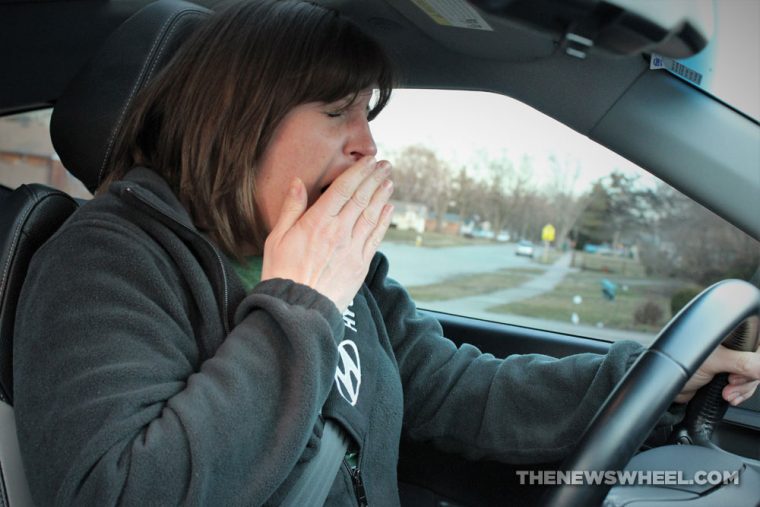Drowsy driving is a serious problem, one which many people don’t take seriously enough. It’s not uncommon for someone to load up on caffeine and energy drinks after a bad night’s sleep so they can drive to work, or even embark on a road trip. But drowsy driving can be as dangerous as several other distracted driving behaviors. Here are some facts and statistics about falling asleep while driving.
New (To You) Car? Here’s how to thoroughly clean it
It’s similar to drunk driving
The CDC reports that being awake for 18 hours is equal to someone having a blood alcohol content of 0.05%. After being awake for 24 hours, that BAC equivalent rises to 0.10%. To put that in perspective, the legal BAC limit in most states is 0.08% (and in Utah it’s 0.05%).
It can be fatal
According to crash statistics collected by the National Highway Traffic Safety Administration, 697 people died in 2019 from drowsy driving-related crashes. That’s actually down a little from 785 deaths in 2018, but it’s still hundreds of deaths that could have been avoided.
It’s important to note that these numbers are likely underreported, because it can be hard to determine whether drowsy driving caused a crash.
It affects your reaction time
When you’re tired, everything seems to take a lot more effort and concentration than when you are well rested. Driving is no exception. Driving while drowsy can make you less attentive, slow your reaction time, and affect your ability to make a decision. That split-second delayed reaction can be the difference between a minor fender bender and a major accident.
Half of U.S. adults admit to it
The National Sleep Foundation reports that around half of adult drivers in the U.S. admit to driving while they’re feeling sleepy or tired. Additionally, 20 percent of adults said they had fallen asleep behind the wheel between 2019 and 2020 (when the survey was conducted). That is a huge issue.
It’s more likely to be an issue at night
In unsurprising news, the NSF says that car accidents involving drowsy drivers usually occur between midnight and 6 a.m. when many people are tucked up in bed. If you work third shift, that makes the road a dangerous place during your commute. The mid-afternoon period is also more dangerous, as many people hit their afternoon slump at this time.
Some people are more likely than others to drive when drowsy
In general, those who aren’t getting enough sleep are likely to be frequent drowsy drivers. That includes people who work long hours or irregular shifts, long-distance truckers, parents of young children, teenagers (who also have inexperience to contend with), and people with sleep disorders.
There are warning signs
You might think you’re fine as you drive bleary-eyed down the highway, but there are plenty of telltale signs that you need to pull over and take a nap. If you’re yawning constantly, feel like you’re dozing off, have droopy eyes, frequently forget the last few miles, drift out of your lane, or miss your exit because you were zoned out, it’s time to find a safe place to pull over and take a break.
It can be avoided
There are things you can do to avoid putting yourself in a situation where you need to drive while drowsy. The most obvious is to get more sleep, which can be easier said than done. Look into sleep hygiene to see how you can improve your bedtime routine for better and deeper sleep.
If you have certain times of the day when you typically feel extra tired, try to avoid driving at those times. The Sleep Foundation says that most people’s internal clocks make them sleepiest in the mid afternoon and between midnight and 6 a.m. (i.e. when many drowsy driving accidents happen).
It sounds obvious, but stay away from alcohol or any medication that makes you sleepy when you know you need to get behind the wheel. Alcohol and sedatives can also affect your sleep cycle and make you more tired than you would be without them.
If you’re driving long distance, it’s a good idea to bring someone with you who can talk to you and keep you alert while you’re driving, and who can take shifts driving so you can take naps. If you’re road-tripping along, make sure you stop frequently to get out and stretch your legs (and nap, if you need to).
Adventure Time: These exciting used vehicle models are perfect for your next family road trip
Drowsy driving is among the most dangerous driving behaviors, along with drunk driving and texting while driving. Don’t get behind the wheel if you’re tired, or you might lose more than a good night’s sleep.
Catherine Hiles (she/her) is a native Brit living and working in Dayton, Ohio. Cat has written about a variety of subjects, including finance, cars, and parenting. She is a frequent contributor to Dayton Mom Collective, The Penny Hoarder, and WDW Magazine.
Cat lives with her husband, their two kids, and their energetic pitbull mix. She counts running, lifting weights, walking, and reading among her hobbies. See more articles by Cat.
